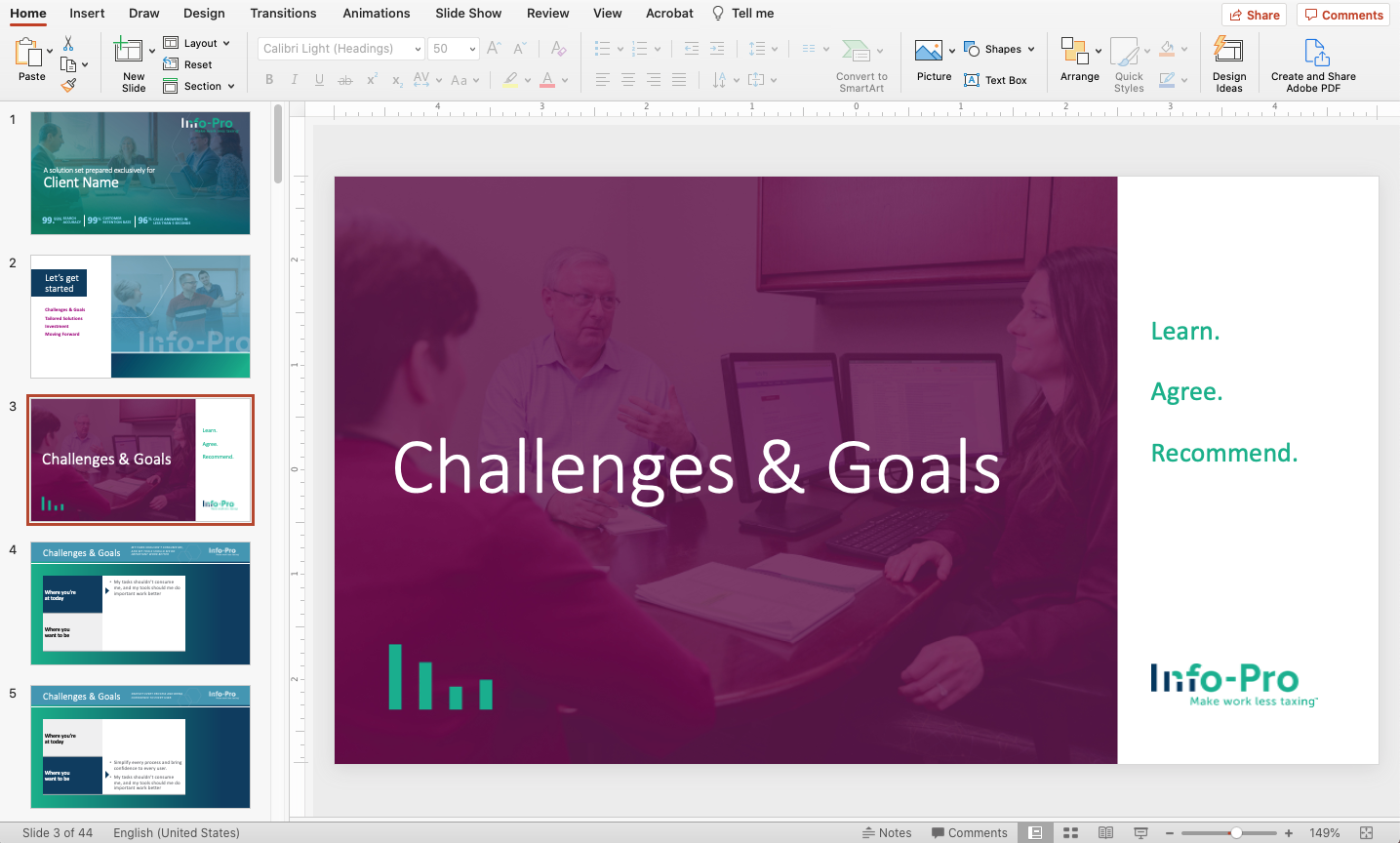7 Best Practices when Building a PowerPoint Presentation

January 10, 2022

There’s two key principles to remember when building a PowerPoint presentation—content and graphic design. This article explains technical considerations when designing PPT presentations to help maximize readability while simplifying your design process.
1. Determine a ratio that will best fit the purpose of the presentation—will it be viewed across multiple device platforms? Or, will it be presented at a conference on a large screen? Best practice is to use the 4:3 ratio for presentations to be distributed to a sales team who use different devices to present to their customers. The 16:9 ratio is most effective when being presented at a conference. Today’s corporations should consider creating both sizes to be prepared for either situation.
2. KISS—“Keep It Simple, Silly.” Slide presentations should be creative but not cluttered. Only use the main speaking points as short, concise bullets. Keep design elements to a minimum so as not to distract the audience from what the speaker is actually verbally presenting.
3. Don’t overuse animations, they can be a distraction and add little value to meaningful content other than “eye candy.” Animations can also add weight to the overall size of the presentation and may cause unpredictable results when displayed across multiple devices.
4. Use large font sizes for readability—Guy Kawasaki suggests nothing under 30 point—however, use a consistent font size even if it is a little smaller to present a consistent, appealing presentation. Read about his 10/20/30 rule.
5. Use "Slide Master" (under the View tab) to standardize slide templates. With Master slides, you can set up a custom theme for your presentation so when slides are added in "Normal" view, background artwork and font styles won't have to be reformatted. This is a great way for organizations to ensure all team members use the same template for brand consistency.
The sub slides in Slide Master are for creating different layout options (adjust placement of headers, subheads, images and bulleted copy). Consider creating Master slides with a variation of art, layout and background colors to give your team multiple "on-brand" options for their presentations.
6. When using "Slide Master", determine what content you want other users to be able to edit. To add non-editable content in Slide Master, use tools in the Home or Insert tabs to add images, text and more. That content will become part of the background and not editable in Normal view.
All existing text and media placeholders on Master slide templates are editable in Normal view. To add your own editable content, you must always use "Insert Placeholder" in the top panel (in Slide Master tab).
7. Use easy to read fonts like Arial or Calibri—if you use a custom font that is not on your sales team’s computers the special font will need to be installed on each device to render the PPT properly.
Overall, let your verbal presentation impress your audience. Use the PowerPoint presentation to inform your audience. Keep it short, to the point and easy on the eyes—your customer’s time is valuable. For content tips, see this blog post.
Struggling to make your presentations stand out? Learn about PowerPoint's newest features and how they can help make your presentations more engaging.






